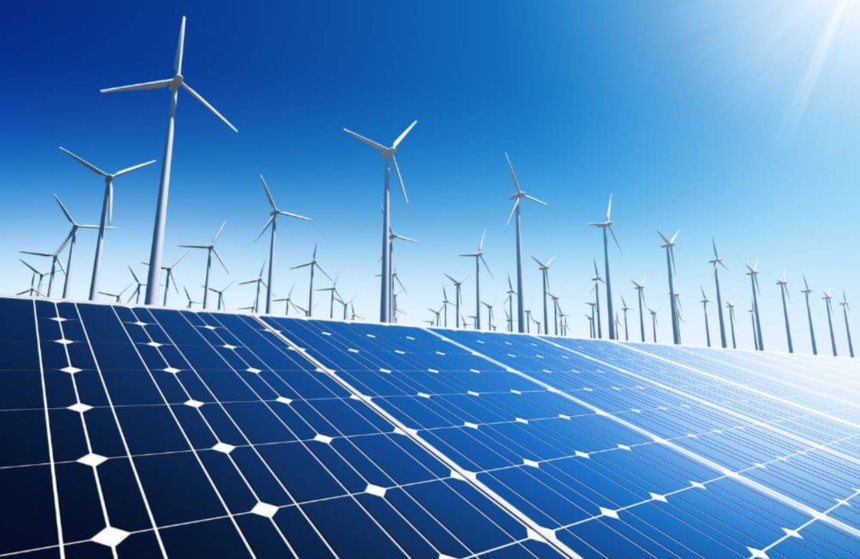Introduction to Renewable Energy
Renewable energy is the future wave, replacing fossil fuels and reducing our carbon footprint. Companies like Energy Texas are leading the charge in sustainable energy solutions by leveraging technologies like solar panels and wind turbines. These energy sources help reduce carbon emissions and provide a cleaner environment for future generations. But what exactly is renewable energy, and why is it crucial for sustainable development?
Renewable energy comes from natural sources that replenish themselves over short periods. Unlike fossil fuels, which are finite and release harmful emissions, renewable energy sources offer a cleaner and more sustainable way to power our lives. This energy can be harnessed endlessly from resources like the sun, wind, water, and even the heat from beneath the Earth’s surface. These natural phenomena contribute to an endless supply of energy that doesn’t deplete the planet’s natural resources.
Types of Renewable Energy Sources
Solar Power
Solar power harnesses energy from the sun using photovoltaic cells. It is one of the most abundant and sustainable energy sources available. Solar panels can be installed in residential, commercial, and industrial settings, making them versatile. Advances in solar technology have significantly reduced the cost of solar panels, making them more accessible to the general public. Solar energy systems also require minimal maintenance, providing long-term benefits with minimal ongoing costs.
Wind Energy
Wind turbines convert wind kinetic energy into mechanical power, which can then be used to generate electricity. Wind energy is particularly effective in areas with strong, consistent winds. Massive wind farms onshore and offshore are being developed worldwide to capitalize on this potential. In some regions, the wind industry has become a significant source of employment and economic activity, revitalizing rural areas and communities.
Hydropower
Hydropower utilizes the energy of flowing water to generate electricity. It is one of the oldest and most reliable forms of renewable energy. Hydropower plants can control water flow by constructing dams and reservoirs to generate a steady electricity supply. Hydropower is particularly useful in regions with ample water resources. Additionally, it offers the flexibility to meet varying energy demands, as water flow can be adjusted as needed.
Geothermal Energy
Geothermal energy taps into the Earth’s natural heat from beneath the surface. This energy source is beneficial in regions with volcanic activity. Geothermal plants harness underground steam and hot water reservoirs to generate electricity and provide direct heating. One of the main advantages of geothermal energy is its low environmental impact, as it produces minimal greenhouse gases compared to fossil fuels.
Biomass Energy
Biomass energy involves converting organic materials such as wood, agricultural waste, and algae into energy. It offers a way to recycle carbon emissions responsibly. Biomass energy provides a dual benefit of reducing waste and generating power by utilizing waste products that would otherwise contribute to pollution. Various technologies, such as anaerobic digestion, gasification, and direct combustion, convert biomass materials into usable energy forms.
Benefits of Renewable Energy
Renewable energy has extensive advantages. In addition to reducing greenhouse gases and combatting climate change, it provides economic growth and job opportunities. The sector employs millions worldwide and offers engineering, construction, and research careers. Renewable energy projects require significant investment in infrastructure, creating jobs, and stimulating local economies. Furthermore, renewable energy sources reduce dependency on imported fuels, enhancing energy security for many nations.
Another significant benefit is the decentralization of energy production. Unlike traditional power plants, renewable energy systems can be installed at various scales, from small residential solar panels to large-scale wind farms. This decentralization allows for more resilient energy grids, particularly in remote or underserved areas. Moreover, renewable energy systems often come with long-term cost savings for consumers as they reduce or eliminate the need for ongoing fuel purchases.
Innovative Solutions and Technologies
Emerging technologies like advanced battery storage, smart grids, and decentralized energy production are helping to mitigate many of the challenges associated with renewable energy. Innovations in battery storage are crucial for solving the problem of energy intermittency, allowing excess energy to be stored and used when production is low. Meanwhile, intelligent grids optimize energy distribution, making the system more efficient. Innovative grid technologies enable real-time monitoring and management of energy supply and demand, reducing wastage and improving reliability.
Another promising innovation is the development of decentralized energy systems. Microgrids and community-based energy projects allow for localized energy production and consumption, reducing reliance on large, centralized power plants. These systems are particularly beneficial in rural or underserved areas, providing reliable and affordable energy access. In addition, advancements in renewable energy materials and engineering are continually enhancing the efficiency and cost-effectiveness of renewable technologies. For instance, improvements in photovoltaic cell technology are increasing the efficiency of solar panels, enabling them to generate more energy from the same amount of sunlight.
Conclusion: The Path Forward
Renewable energy is not just a trend; it’s an essential path forward for a sustainable future. Investing in and supporting renewable energy initiatives can pave the way for a cleaner world. The efforts of companies are crucial in this journey, highlighting the incredible potential of renewable energy solutions. Achieving a sustainable energy future will require concerted efforts from governments, businesses, and individuals, fostering innovation, collaboration, and a shared vision for a brighter and cleaner future for all.















